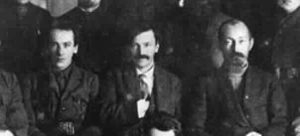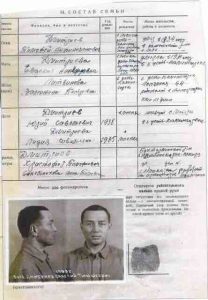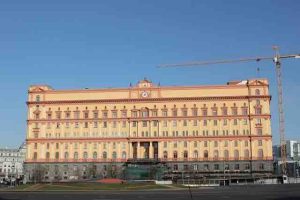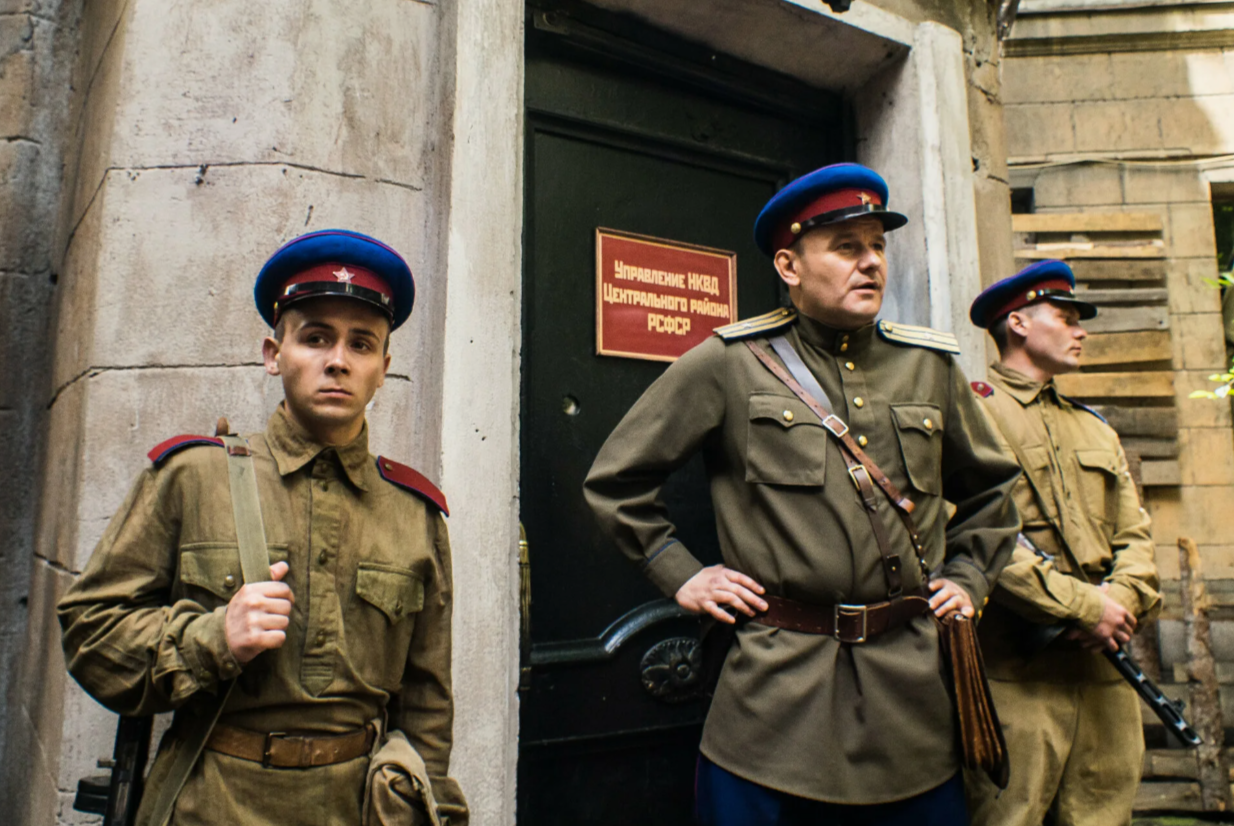Written By: Draga Ivić
NKVD: the secret power of Soviet security-the rise, operations and legacy of the USSR's most notorious intelligence service
Someone has to do it. Around all security services, a reputation of untouchability, power, danger and omnipresence has been created. At first glance, these are the features that a security pyramid in a country should have, and that's not surprising. Shakespeare once said,”dress up, they come in disguise."
However, if we analyze more deeply, we will understand why such services wanted-not wanted must have such a halo, needed to perform the task set and justify the goal of existence. The state needs to be protected and that is not a question.
The real question is-in whose name, by whom and by what methods.
The abbreviation NKVD of the USSR stands for Narodny komissariat vnutrennih de Союза советский социалистический Республик (NKVD of the USSR).
The ministries of the young state, the USSR have long been called People's commissariats, in accordance with the tradition that Russians easily accept strangers; commissarius it comes to us from Latin and for a long time this noun denoted an authorized representative, while in the collective consciousness it did not ”stick” the unpopular connotation related to a political representative of the government in some body, unit, institution.
NKVD is the people's commissariat (Ministry) of internal affairs of the Union of Soviet Socialist Republics, i.e. Narkomvnudel; this verbalized abbreviation represents another Soviet linguistic custom to shorten long constructions – komdiv is the commander of a division, sanbat is a Medical Battalion, raykom – Rayon the committee or committee of the réon, minoboroni is the Ministry of Defense, etc. At the same time, these abbreviations have become the subject of internal jokes and jokes, which is a special story and not only Russian (”Ozna all knows” etc.).
Why did the NKVD become notorious around the world? Professionals and security experts will easily prove to you that it is not very different from other similar organizations around the world.
All of them are pyramidal, very complex in all planes, functionally connected within their model through a very small number of strictly defined links to maximize the risk of compromising data or stocks.
Many unwritten laws apply to them, almost in the rank of the deep state. In this, the SIS, CIA, KGB, Chinese MSS and others, are no different at all. They are changed by the competent, means and adjusted methodology, but the mechanism of functioning remains the same.

Photo: founders of NKVD Jagoda, Menzinsk I and Djerzhinsky, founder of VCK
Beginnings
The NKVD was founded quite rationally and logically. A huge country that had just emerged from an ideological, fratricidal civil war and foreign military intervention had to be defended from the outside and from the inside, often by harsh methods. This is not an excuse, but an explanation.
The USSR was lifted, practically, off the ice and we have already written about it (”how the capitalists built socialism”). As the largest and then the only communist state, it immediately accumulated a multitude of enemies, and their description of affairs included the constant ”blackening” of all possible Soviet institutions, with the NKVD being the ideal target. Mysterious and closed, everything could be written and said about him, for nothing could be proved – or challenged.
Since it was a territorially large country facing numerous challenges, with a multitude of Nations, different religious and ideological heritage, the NKVD was a very complex organization, practically an internal army. That's what they called it, and often called it. Therefore, in the shortest possible time, we will look at its organization and functioning, because behind each of the steps of its hierarchy there are, on any one step, many organs and organizations with divisions whose description deserves an encyclopedic challenge and scope.
The successors of Okhranna (by pre – revolutionary Russian правопису-Отдѣленіе по охраненію общественной безопасности и порядка) and ВЧК (Всероссийская чрезвычайная комиссия) had someone to learn from, confronting during revolutionary times (and later) with top professionals foreign intelligence agencies, saboteurs, forest gangs, internal crime, swordsmen (abandoned underage children without parents, very brash bandits), White emigration, sabotage, obstruction of development plans, etc., etc.
There was no area in which the NKVD did not have its own commissioners, so it can be said that, in this sense, the Soviet Union was indeed a police state. The formal division of the fields and departments into the NKVD confirms this. An internal joke of the time was that the NKVD could not only track submarines.but it had its associates in them.


Photo: Certificate of confiscation of things and real estate arrested and pages from the dossier of the assassin on Mikoyan, 1942. year
Formal establishment
The NKVD was established by the decision of the Central Executive Committee of the USSR 10. July 1934. years. It was formed by the United State political administration of the USSR, which was renamed the main administration of State Security (GUGB).
The newly established commissariat (ministry) was responsible for supervision and coordination in practically all areas of life such as: general utility area (economy, Water Management, heating, improvement of living conditions), construction, all branches of economy and industry, etc.; However, what set it apart from these general tasks, which were primarily handled by other ministries, is the following job description: political investigations and the right to extrajudicial punishment (!), the penal system, the foreign intelligence service, the border troops and the internal army, but also the counterintelligence service in the army.
The NKVD was not until 1946. years transformed into the MVD of the USSR, i.e. the Ministry of the interior.
NKVD development ladder
In order to understand how complex problems (including bureaucracy) the young state struggled with while building its security architecture, let's look at the chronology of the origin and duration of the Russian (Soviet) security services, from its inception to the present day.
Even this, the shortest review, will give us a picture of the grandiose complexity of this structure, the successor to the diet:
VCC RSFSR (All-Union Extraordinary Commission - "Cheka", 1917-1922).
GPU RSFSR (main political administration, 1922-1923).
OGPU of the USSR (United State political administration, 1934-1941).
NKVD of the USSR (people's Commissariat of internal affairs, 1934-1941).
The NKGB of the USSR (people's Ministry of State Security, operated from February to July 1941. years since 1943. by 1953. years).
GUGB NKVS of the USSR (main administration of state security, as part of the NKVD, 1934-1941).
NKGB of the USSR (people's Ministry of State Security, 1943-1946).
MGB of the USSR (Ministry of State Security, 1946-1953).
MVD of the USSR (Ministry of the interior, 1953-1954).
The KGB of the USSR (Committee of state security, besides the NKVD the most famous abbreviation in this field. Radio since 1954. until 1991. years).
The ISSB of the USSR (Inter-National Security Service, worked in 1991. years).
SR USSR (Central Intelligence Service, briefly operated in 1991. years).
KOGG of the USSR (Ministry of defense of the state border, 1991. years).
With the dissolution of the USSR security affairs was succeeded by the Ministry of security (мистерство безапасности Российской Федерации), which operated since 1992. until 1993. years.
This service was followed by the federal counterintelligence service of the Russian Federation, which operated until 1995. she was the successor of the Russian Security Service.
Finally, it's 1995. he was succeeded by the FSB (Федеральная служба безопасности).
The last three operating under the USSR flag (MSB, CSR and KOGG) were a forced transformation in the rapid disengagement of the USSR. As this pyramid looks today, we have partly written about it, but on some occasion we will return to this topic, because everything certainly influenced the transformation of these services.

Photo: building of the former nnkvd after Reconstruction in 2014.
Organization and functioning of NKVD
As we have already mentioned, in the domain of his affairs, there was practically everything. It can be said quite freely that it was a state within a state that could only be controlled by Stalin and his two or three closest associates. The Armed Forces (RKKA and then the Red Army) had their own security service (we wrote about it in the article ”without the right to glory”) and there was certainly a certain antagonism between these two armies, which is a special topic.
The NKVD had eleven administrations. The central apparatus initially employed 8,211 people, while the actual number of commissioners at lower levels (up to the last village and Hamlet) will never be determined. Only the Main Directorate of State Security (GUGB) contained eight other major departments, ranging from counterintelligence to economic and accounting. It can be said with certainty that the NKVD was also a large consumer, because in various departments and at different levels it had tens of thousands of professionals, while a huge number of modern technical means and weapons, transport, etc.had to be provided for the execution of tasks.
The Main Directorate of State Security (ГУГБ) was directly subordinated to narko (people's commissar, i.e. Minister) Jagoda (Генрих Григорьевич Ягода). The main operational departments of the former OGPU (United States political administration)entered the GUGB:
Special department (co-intelligence).
Secret political department (struggle with political opponents).
Economic department (fight against saboteurs and pests, saboteurs).
Department of Foreign Affairs (Foreign Intelligence Service).
Operational Department (protection of top executives, searches, detentions, surveillance).
Special department (code service, supervision of conspirativeness in departments).
Transport department (fight with saboteurs and saboteurs on roads of all kinds).
Accounting and Statistics Department (operational accounting, statistics, archives).
Transformation
A high degree of conspiracy in this complex service is also ensured by relatively frequent transformations, divisions, transfers, appointments, changes in the name and job description, etc.
The first major division occurred on February 3, 1941. the year the Presidium of the Supreme Soviet of the USSR divided the NKVD into two independent bodies: the NKVD (headed by Beria) and the people's Commissariat of state security (NKGB) led by Vsevolod Merkulov.
The special section of the NKVD, which was in charge of counterintelligence in the RKKA, had two sections – for KOV and RM.

Photo: footage from the film "in August 44"
War and NKVD
With numerous reorganizations, both in local and in actual jurisdiction, the NKVD and NKGB welcomed the beginning of the Second World War. They were immediately returned to the structure of a single ministry – the original NKGB, with the Minister remaining Beria and Merkulov becoming the first deputy.
Counterintelligence work has been intensified, especially in the front belt, the finding and liquidation of diversionaries and agents in the background. This ministry was also subordinated to the rear guard forces (Войска НКВД по охране тыла; it operated from 25.07.1941 to October 1945. years).
Already 17. October 1941. in a state of a very complex war situation, the state committee of defense gives powers to the Special Council of the NKVD (Osoboe soveщanie PRI NKVD of the USSR) of the RSFSR to impose the death penalty for acts against the state order – based on Articles 58 and 59 of the Criminal Code. The decisions were final, with no right of Appeal. This order was withdrawn only on the first of September 1953. years after The Death Of Stalin, at the insistence of Bulganin and Khrushchev. A little later, in December, Beria, as the last protector of the broadest powers, was shot.
During the war there were other reforms in the ministry. The most important is the 19. April 1943. the year when the Council of people's commissars (decree № 415-138ss) established the main administration of the counterintelligence service ”Smerš” (Смерть спионам). V. S. Abakumov was appointed chief. This decree also formed the "Smersh" of the Navy with chief P. A. Glatkov.
For the sake of easier work and coordination of Border Forces, internal army, militia and other armed formations of the NKVD, Decree No.№ 00856 was a formed Department of the counterintelligence service (OKR) headed by S. P. Yukhimovich.
When the Red Army forces went into final combat with the troops of the Axis Powers, 11. January 1945. in 2016, Beria, by order № 0016, designated NKVD plenipotentiaries at the front level.
Formally, their job was to coordinate the overall security of the front belt, which was constantly shifting and seeking communication between the ever-numerous troops in an ever-shrinking space; however, these plenipotentiaries secretly reported to Berry on the behavior of the highest commanders, most notably the prominent marshals of whom Stalin and he resented. The plenipotentiaries consisted of seven main ones, out of a total of ten fronts that existed at that time.
Occasionally or permanently, in addition to the GUGB (Main Directorate of State Security), the NKVD also had the following main directorates (Gu):
GURKM (worker-peasant militia).
Gubb (fight against banditry).
Guppivo (border and internal protection).
Gupo (Fire Service).
Gušosdor (Kolski roads).
Geu (Economics).
Gulag (lasers, i.e. camps).
GTU (Transport).
GUVPS (prisoners and internees).
During the war, NKVD divisions often actively participated in frontline battles, organizing the partisan movement, cooperation with liberation movements of other countries. In their domain they entered obstacle and hunting (pursuit) detachments, which we will write about in particular.
After the war, the NKVD was 15. March 1946. years later, he became the Minister of state security. The NKVD changed a total of four ministers: Yagoda, Yezhov, Beria and Kruglov. How dangerous this job was for everyone, including them, is evidenced by the fact that, of the four, three were shot. V. S. Abakumov (head of SMERSH) was also shot. Only Kruglov (Sergei Nikiforovich Kruglov) outlived Beria, but also Generalissimo Stalin.
Title photo: footage from the filming of the series "Komissarša"
9. February 2025.

